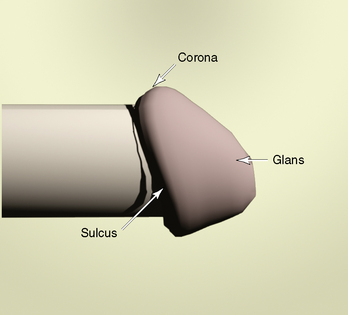Chapter 45 Circumcision
Common indications
The three most common elective neonatal circumcision techniques are the Gomco, the Mogen, and the Plastibell techniques. It is important to learn one technique well before attempting to master the other methods. The advantages of each technique are generally equalized by the risks associated with each method. The key anatomic landmarks of the penis are the glans penis, the corona, and the coronal sulcus. During all procedures, care must be taken to avoid dissecting the foreskin beyond the coronal sulcus (Figure 45-1).
Equipment
For all three procedures, a penile block is performed with a 3-cc syringe, a 27- or 30-gauge needle for injection, and plain lidocaine without epinephrine. Three hemostats, with one being a straight hemostat, suture scissors, a needle driver, and a No. 15 scalpel are essential for performing this procedure (Figure 45-2). Prepare the Gomco clamp by separating its parts and ensuring that they fit properly together and that the bell is large enough to seal against the baseplate. The Mogen should be checked to make sure that the clamp shuts and locks completely and it is not loose. For the third technique, select a Plastibell that will easily fit over the glans; usually a 1.3-cm bell will fit a normal-sized glans. The Plastibell string is extended, and a half surgeon’s knot is tied loosely for the first step of the technique.
Key steps
Stay updated, free articles. Join our Telegram channel

Full access? Get Clinical Tree




